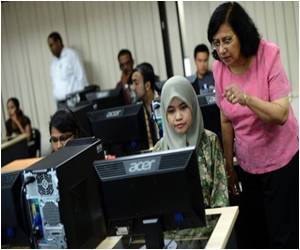The community college system is a potential source of student diversity for medical schools and physicians who will serve poor communities.

The study also found that students who began their college education at a community college were less likely to get admitted to medical school than those students who never attended a community college or only attended a four-year university.
Using data from the 2012 Association of American Medical Colleges matriculant and applicant files and the AAMC's Matriculating Student Questionnaire, researchers examined the association between students' participation in a community college pathway, medical school admission and intention to practice medicine in underserved communities or work with minority populations.
Of 40,491 medical school applicants evaluated, 17,518 enrolled in medical school. Of those, 4,920 (28 percent) had attended a community college concurrently with high school, after high school or following graduation from a four-year college or university in order to take courses in preparation for medical school.
The researchers found that a higher proportion of underrepresented minority matriculants used the community college pathways compared with white students or other racial and ethnic groups. Thirty-four percent of Latinos had attended community colleges, (538 of 1,566 matriculants), compared with 28 percent of black students (311 of 1,109), 27 percent of white students (2,715 of 9,905), 27 percent of Asian students (963 of 3,628) and 30 percent of students identifying themselves as mixed-race or other race (393 of 1,310).
Applicants who attended community college after high school before transferring to a four-year college or university were 30 percent less likely to be admitted, compared to those students who never attended a community college or only attended a four-year university to medical school, after adjusting for age, gender, race and ethnicity, parental education, grade point average and MCAT score. The same group also was 26 percent more likely to intend to practice medicine in an underserved area than their non-community college educated peers.
Advertisement









